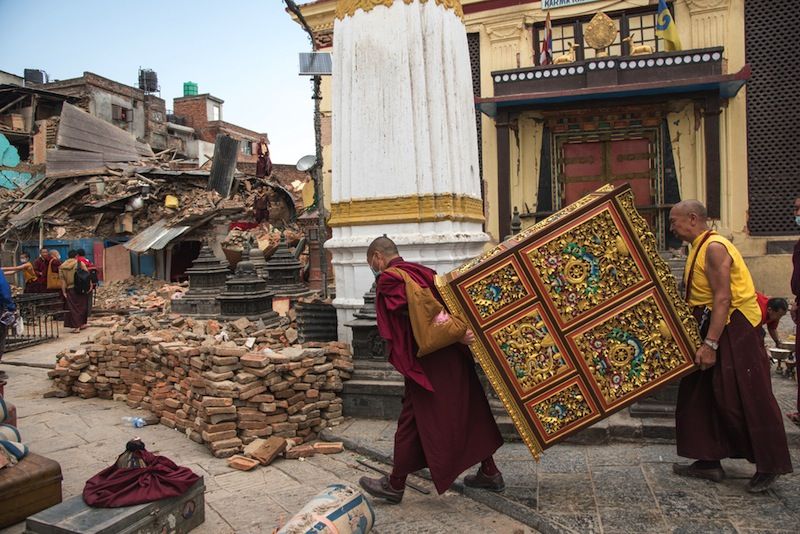7.3-Magnitude Aftershock: Landslides Pose New Threat to Nepal

A powerful aftershock that struck Nepal today (May 12) has triggered new landslides on slopes already weakened by the April 25 earthquake, experts said.
"We are expecting many, many more landslides," engineering geologist Tom Dijkstra of the British Geological Survey told Live Science. "It (Nepal) definitely received a double whammy."
Scientists from groups in the United States and the United Kingdom have already mapped more than 3,000 landslides from satellite images since the magnitude-7.8 earthquake hit Nepal in late April. Dijkstra said this earlier shaking primed the region's steep hillsides for further rockfalls by loosening soil and debris.
"There were eyewitness accounts of large cracks that appeared in slopes," Dijkstra said. "There is now an inherent instability in the landscape."
At least 37 people were killed in today's quake and more than 1,100 were injured, according to early news reports. [Nepal Earthquake Photos: Odd Effects of Kathmandu Temblor]
Today's earthquake was centered well to the east of the earlier April 25 temblor. However, the main earthquake, which began northwest of Kathmandu, directed its energy to the east, so shaking from both quakes hit the same areas twice. The new quake destroyed houses and lodges near Mount Everest, but local officials said few tourists were still in the region, the BBC reported. Fresh rockfalls have also further blocked Nepal's main highways, including the Arniko Highway (north to Tibet) and the Prithvi Highway (the primary route from Kathmandu to India).
Today's magnitude-7.3 earthquake was an aftershock of the earlier April 25 Gorkha earthquake, said Gavin Hayes, a research geophysicist with the U.S. Geological Survey (USGS) in Golden, Colorado. "It is significantly smaller than the main event," Hayes told Live Science. A magnitude-7.3 earthquake releases about 5 times less energy than a magnitude 7.8 earthquake. Both quakes ruptured the Main Himalayan Thrust, Hayes said.
Sign up for the Live Science daily newsletter now
Get the world’s most fascinating discoveries delivered straight to your inbox.
The aftershock appears to fill a "seismic gap." It was centered between the eastern edge of the patch that caused the April 25 Gorkha earthquake and a historic temblor that struck in 1934 on the same fault.
The USGS had forecast a less than 1 percent chance, or 1-in-200 odds, of an earthquake of between magnitude 7 and magnitude 7.8 occurring this week. While bigger earthquakes have more and larger aftershocks than smaller quakes, overall, the number of aftershocks decreases with time.
The potential for even larger earthquakes is extremely low, Hayes said. The USGS forecasts a 1-in-1,000 chance of another earthquake as large as the April 25 shaker. "Social media seems to be spreading the rumor that a much larger event is expected, but the probability is small," Hayes said.
However, the risk of landslides will remain high in the coming months, even as the number of aftershocks diminishes. When the monsoon rains arrive in June, slopes destabilized by the earthquakes could trigger new landslides.
"We are likely to have much more severe consequences during the monsoon," Dijkstra said.
Follow Becky Oskin @beckyoskin. Follow Live Science @livescience, Facebook & Google+. Originally published on Live Science.

Most Popular

